Abstract
The pregnancy outcomes on cases of Down syndrome diagnosed prenatally in which the mother did not elect termination were evaluated in data reported to a comprehensive Register of Down syndrome for England and Wales for 1989-94. In the 168 cases in which placental biopsy was not used, the overall rate of spontaneous loss was 35%, but this figure masks considerable heterogeneity by gestational stage at ascertainment. Data on ages at diagnostic procedure and on pregnancy termination enabled a more precise survival analysis. The loss rates were approximately 50% for those fetuses ascertained at 15-17 completed wk, 43% at 18 wk, 31% at 19 wk, 25% at 20 wk, and then a leveling off at approximately 20%-25% for fetuses ascertained at 21-28 completed wk. For fetuses ascertained prior to 18 wk, there was no evidence that maternal age was associated with fetal loss, consistent with earlier reports. At 18 wk and after, however, maternal age was on the average approximately 3 years greater in fetuses that were lost. Comparison of successive gestational birth cohorts provided no evidence in these 168 cases that the diagnostic procedure itself had any effect on loss or that selective ascertainment of mothers in risk of loss had any effect on the results. In contrast, in the 21 cases in which placental biopsy had been undertaken, the overall loss rates were not only higher when appropriate comparisons could be made, but there was some evidence for selective ascertainment and/or procedure-associated losses.(ABSTRACT TRUNCATED AT 250 WORDS)
Full text
PDF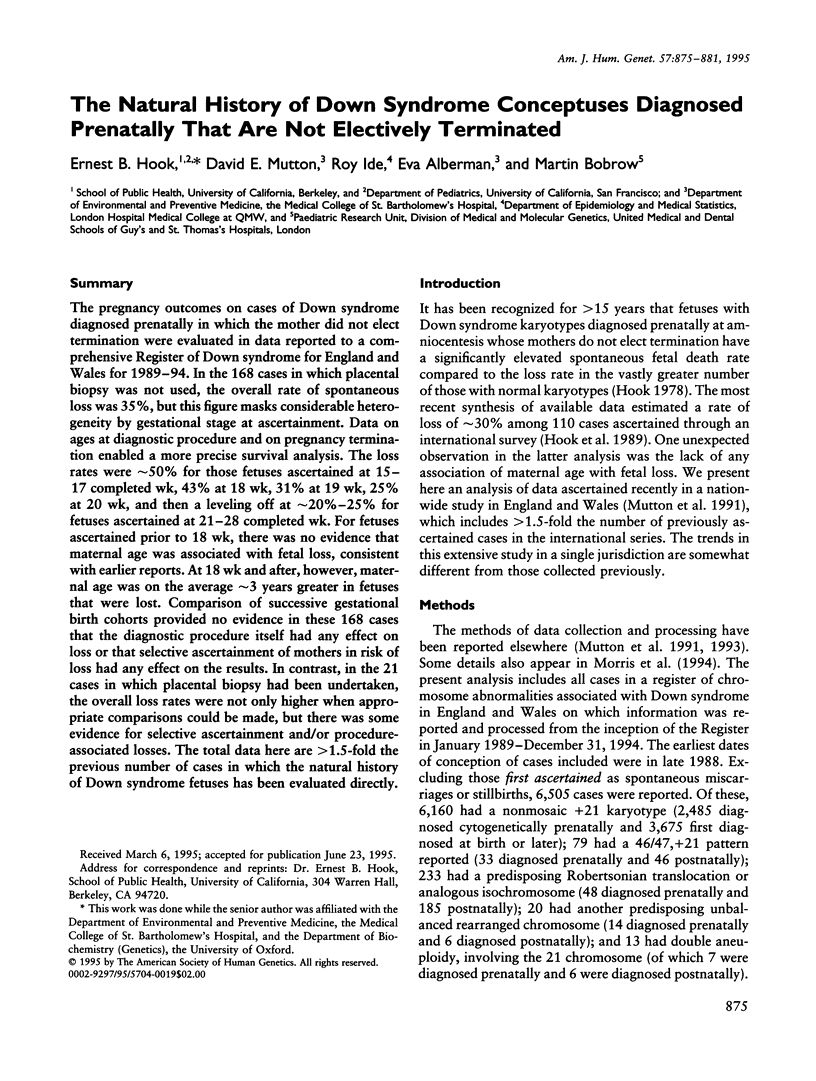
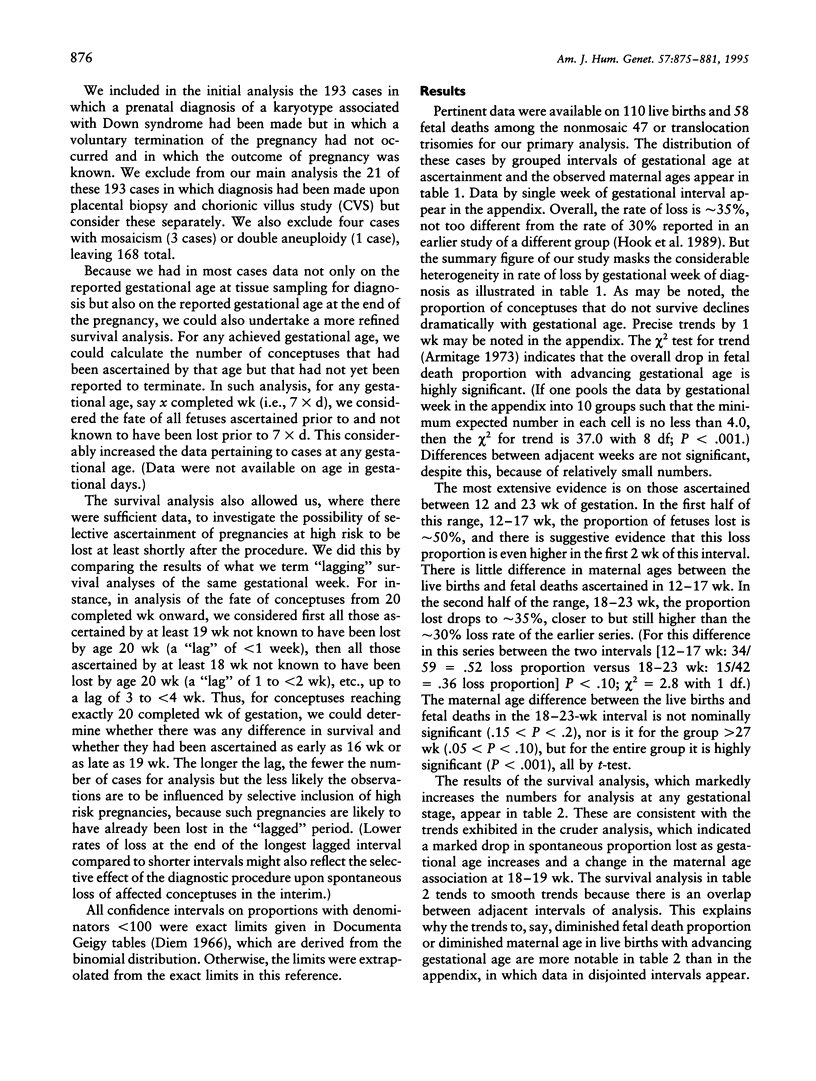
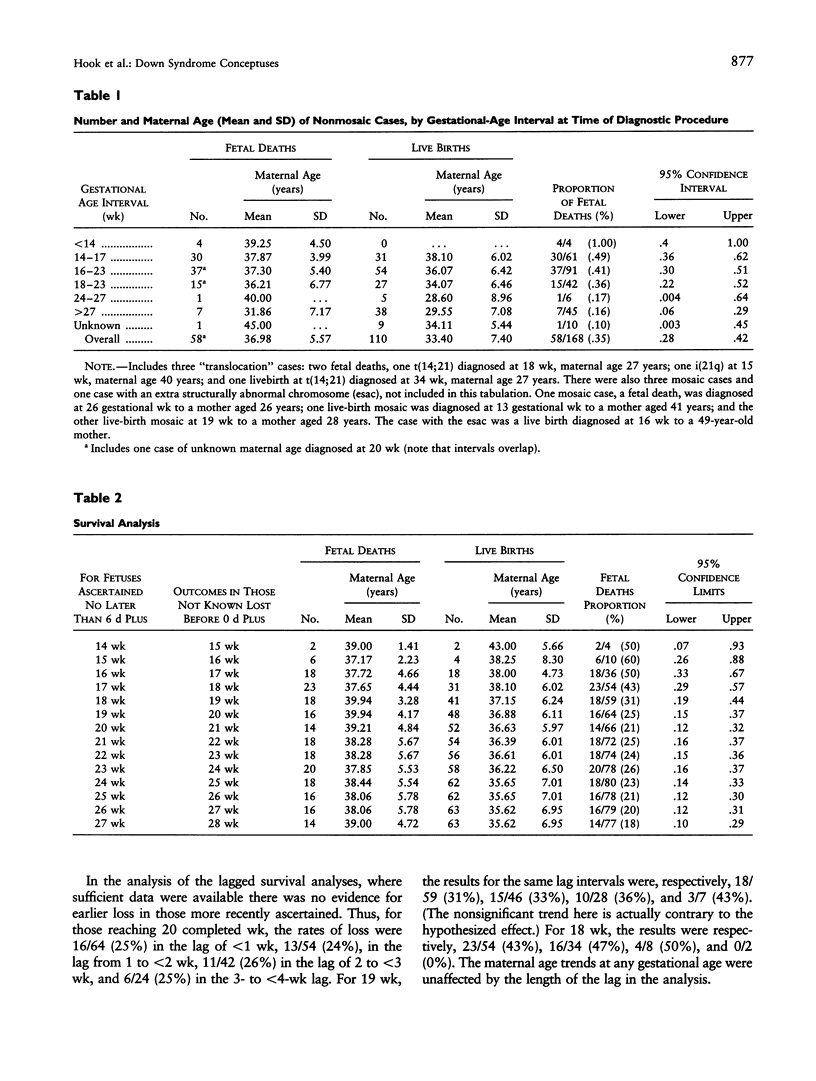
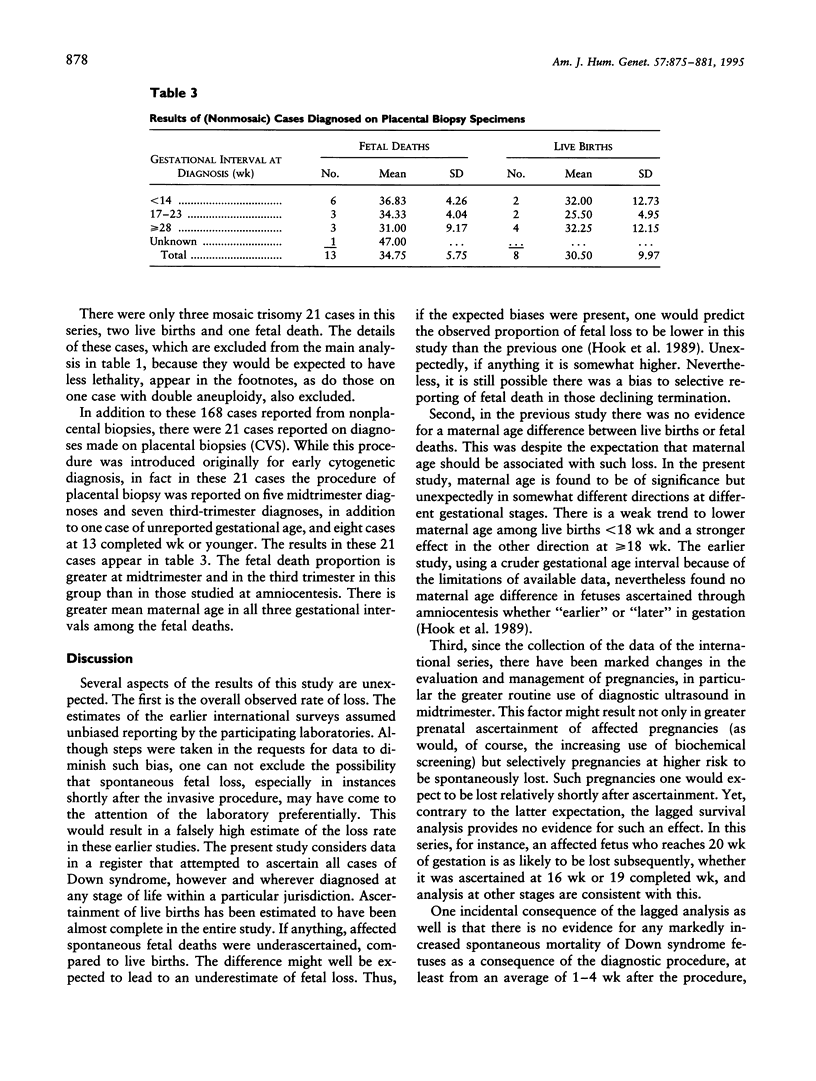
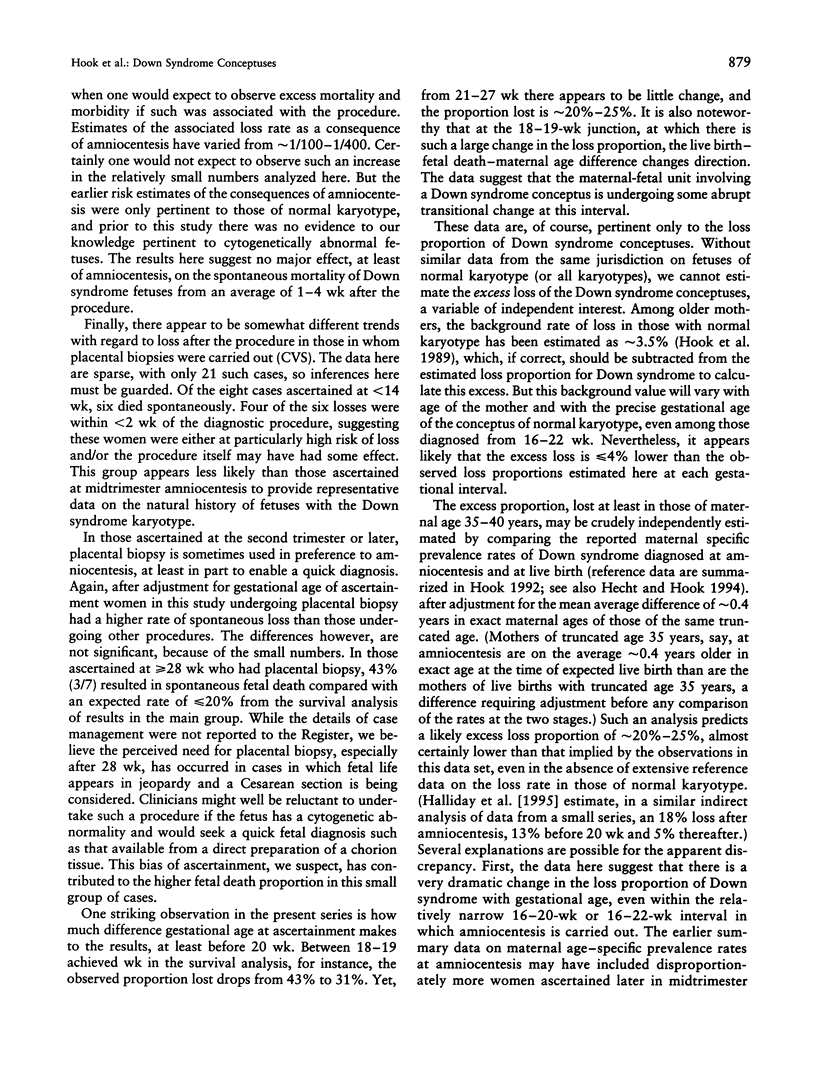
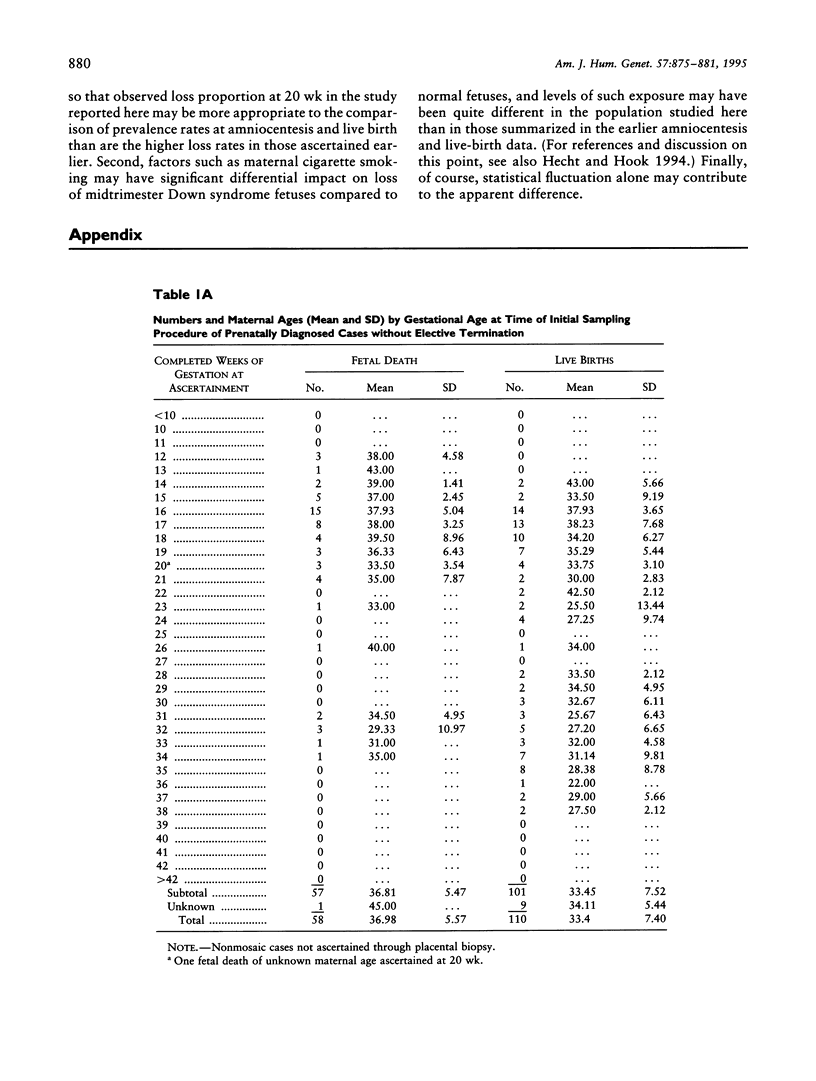
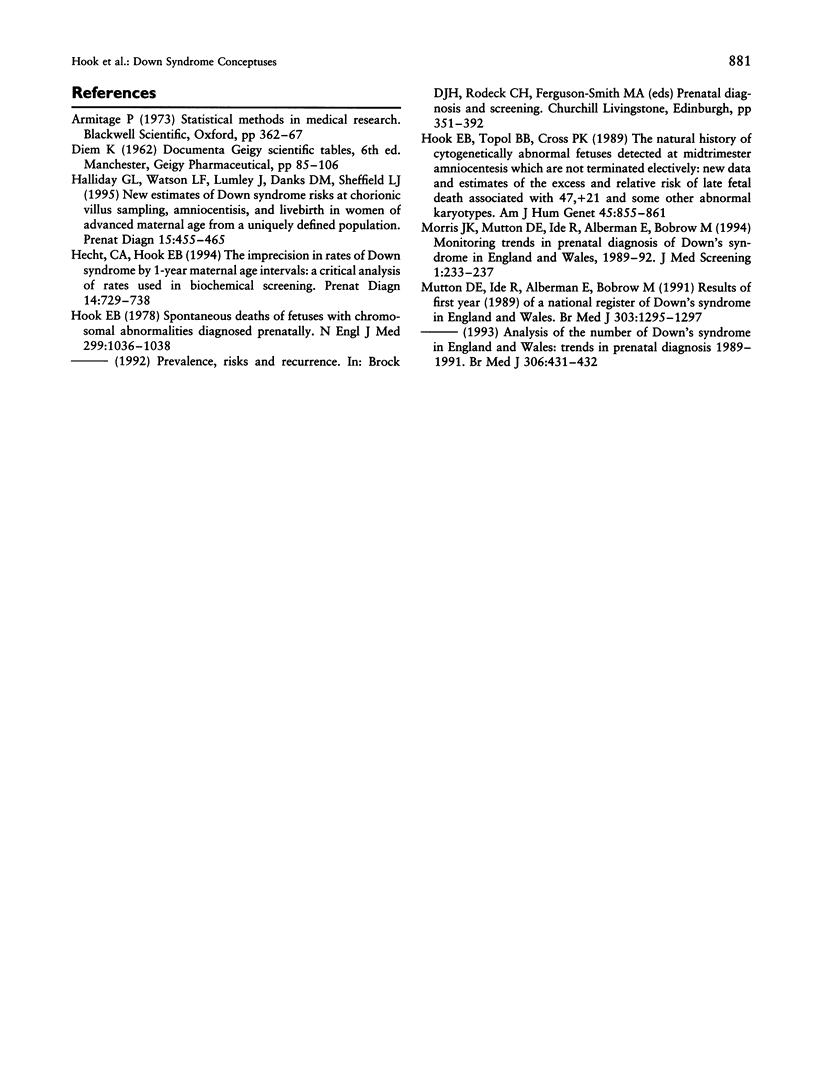
Selected References
These references are in PubMed. This may not be the complete list of references from this article.
- Halliday J. L., Watson L. F., Lumley J., Danks D. M., Sheffield L. J. New estimates of Down syndrome risks at chorionic villus sampling, amniocentesis, and livebirth in women of advanced maternal age from a uniquely defined population. Prenat Diagn. 1995 May;15(5):455–465. doi: 10.1002/pd.1970150509. [DOI] [PubMed] [Google Scholar]
- Hecht C. A., Hook E. B. The imprecision in rates of Down syndrome by 1-year maternal age intervals: a critical analysis of rates used in biochemical screening. Prenat Diagn. 1994 Aug;14(8):729–738. doi: 10.1002/pd.1970140814. [DOI] [PubMed] [Google Scholar]
- Hook E. B. Spontaneous deaths of fetuses with chromosomal abnormalities diagnosed prenatally. N Engl J Med. 1978 Nov 9;299(19):1036–1038. doi: 10.1056/NEJM197811092991903. [DOI] [PubMed] [Google Scholar]
- Hook E. B., Topol B. B., Cross P. K. The natural history of cytogenetically abnormal fetuses detected at midtrimester amniocentesis which are not terminated electively: new data and estimates of the excess and relative risk of late fetal death associated with 47,+21 and some other abnormal karyotypes. Am J Hum Genet. 1989 Dec;45(6):855–861. [PMC free article] [PubMed] [Google Scholar]
- Morris J. K., Mutton D. E., Ide R., Alberman E., Bobrow M. Monitoring trends in prenatal diagnosis of Down's syndrome in England and Wales, 1989-92. J Med Screen. 1994 Oct;1(4):233–237. doi: 10.1177/096914139400100410. [DOI] [PubMed] [Google Scholar]
- Mutton D. E., Alberman E., Ide R., Bobrow M. Results of first year (1989) of a national register of Down's syndrome in England and Wales. BMJ. 1991 Nov 23;303(6813):1295–1297. doi: 10.1136/bmj.303.6813.1295. [DOI] [PMC free article] [PubMed] [Google Scholar]


